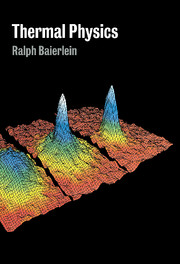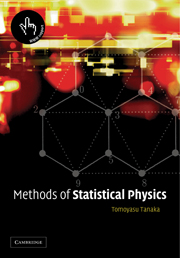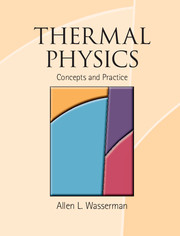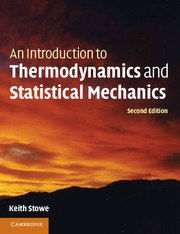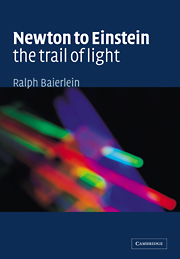Thermal Physics
Suitable for both undergraduates and graduates, this textbook provides an up-to-date, accessible introduction to thermal physics. The material provides a comprehensive understanding of thermodynamics, statistical mechanics, and kinetic theory, and has been extensively tested in the classroom by the author who is an experienced teacher. This book begins with a clear review of fundamental ideas and goes on to construct a conceptual foundation of four linked elements: entropy and the Second Law, the canonical probability distribution, the partition function, and the chemical potential. This foundation is used throughout the book to help explain new topics and exciting recent developments such as Bose-Einstein condensation and critical phenomena. The highlighting of key equations, summaries of essential ideas, and an extensive set of problems of varying degrees of difficulty will allow readers to fully grasp both the basic and current aspects of the subject. A solutions manual is available for instructors. This book is an invaluable textbook for students in physics and astronomy.
- Free solutions manual available to instructors by emailing '[email protected]'
- Provides a generous one semester course
- Easy start with minimal background assumed but still gets to entropy in the second chapter
Reviews & endorsements
"...an excellent book...Baierlein's writing is exceptionally clear....Every quantity is clearly defined, and discussed when any confusion could arise, whether the concept is simple or complex....Baierlein always backs up the equations with explanations in words, and with examples....The organization of topics seems natural and well thought out....certainly among the best possible choices for use in an undergraduate course." American Journal of Physics
"The book, written in instructive form, shows great experience of the author as a teacher. Many examples of different degrees of difficulty either theoretical, experimental, or based on everyday observations, make the book interesting and readable. The author manages to present the complex ideas of thermal physics in a clear and attractive way." Applied Mechanics Reviews
"...written so that students will receive an empirical, intuitive understanding of thermodynamics processes....The book is well written, uses plenty of descriptive material to establish the basic fundamentals, and is supplemented with useful applications." Choice
"This book is a superb introduction to the key concepts of statistical mechanics, thoroughly modern in approach with current topics emphasized as well as basic principles. Baierlein's characteristic clarity of exposition makes the book ideal for self-study as well as for classroom use." H. Eugene Stanley, Boston University
"I enjoyed reading this tremendously. The author has a personal and thoughtful way of introducing and arranging the material. He has succeeded in making many of the difficult concepts more intuitive and more within the grasp of students who have very little background in thermodynamics and thermal physics. In the hands of a skilled teacher, this book would serve very well in its intended role." Journal of Statistical Physics
"...very well written and a pleasure to read...what makes this text stand out is the quality, clarity, and conciseness of the writing." Physics Today
Product details
July 1999Paperback
9780521658386
460 pages
244 × 170 × 28 mm
0.77kg
119 b/w illus. 1 colour illus. 41 tables
Available
Table of Contents
- Preface
- 1. Background
- 2. The second law of thermodynamics
- 3. Entropy and efficiency
- 4. Entropy in quantum theory
- 5. The canonical probability distribution
- 6. Photons and phonons
- 7. The chemical potential
- 8. The quantum ideal gas
- 9. Fermions and bosons at low temperature
- 10. The free energies
- 11. Chemical equilibrium
- 12. Phase equilibrium
- 13. The classical limit
- 14. Approaching zero
- 15. Transport processes
- 16. Critical phenomena
- Epilogue
- Appendix A. Physical and mathematical data
- Appendix B. Examples of estimating occupation numbers
- Appendix C. The framework of probability theory
- Appendix D. Qualitative perspectives on the van der Waals equation
- Index.

